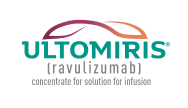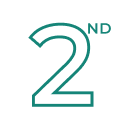


healthcare professional
Adapted from Pittock SJ, et al. Ann Neurol. 2023 93:1053-1068.
All patients were required to be vaccinated against meningococal infections at least two weeks before initiating ravulizumab.2
* The end of the primary treatment period was to be triggered when 2 patients had an adjudicated on-trial relapse and all patients had completed, or discontinued before, 26 weeks on study. If 2 patients had not had an adjudicated on-trial relapse by the time all patients had completed, or discontinued before, 50 weeks on study, the end of the primary treatment period was to be triggered at that time.2
† No patients had an adjudicated on-trial relapse during the study; the end of the primary treatment period was triggered when all patients had completed, or discontinued before, 50 weeks on study.2



* Treating physicians identified on-trial relapses according to the same criteria used in the PREVENT study: new onset of neurologic symptoms or worsening of existing neurologic symptoms with an objective change on neurologic examination that persisted for > 24 hours signs and symptoms attributable to NMOSD; and onset preceded by ≥ 30 days of clinical stability.2
† In the ULTOMIRIS® group compared with the PREVENT placebo group.2
‡ Change from baseline on the HAI score, EQ-5D index score, and EQ-5D VAS score, worsening from baseline on the EDSS, incidence of ARs, types of ARs, and ARs leading to discontinuation, change in serum ULTOMIRIS® concentration, change in serum-free C5 concentration, presence and titer of ADAs.2

Patients who were receiving immunosuppressive therapies (ISTs) for relapse prevention were eligible for inclusion if they were receiving stable-dose regimens.2
Adapted from Pittock SJ, et al. Ann Neurol. 2023;93(6):1053–1068.
* Although CHAMPION-NMOSD was designed to be as similar as possible to PREVENT, between-group differences in baseline characteristics were possible. This potential bias was minimised by elements of the trial design, and the ultimate impact of these differences on the trial results was assessed using propensity score–weighted analyses (SIPTW) and was found to be negligible given the consistent results between the primary analysis and the SIPTW weighted analysis. Additionally, to preserve scientific validity, consistency with PREVENT was maintained whenever possible.2
† Azathioprine and Mycophenolate subgroups included patients with or without the use of steroids.2
* Because all participants in PREVENT were seropositive for anti-aquaporin-4 antibodies, they would all have met the 2015 international consensus diagnostic criteria.2,3
† Data published after PREVENT showed a modest reduction of 4% to 8% in the risk of future relapses between patients who had one versus two relapses in the previous 24 months; these data informed the inclusion criteria for CHAMPION-NMOSD.2,3
Adverse Event Reporting
Please report any adverse reactions via your national reporting system. Adverse events should also be reported to Alexion pharmaceuticals by the following link: https://contactazmedical.astrazeneca.com
